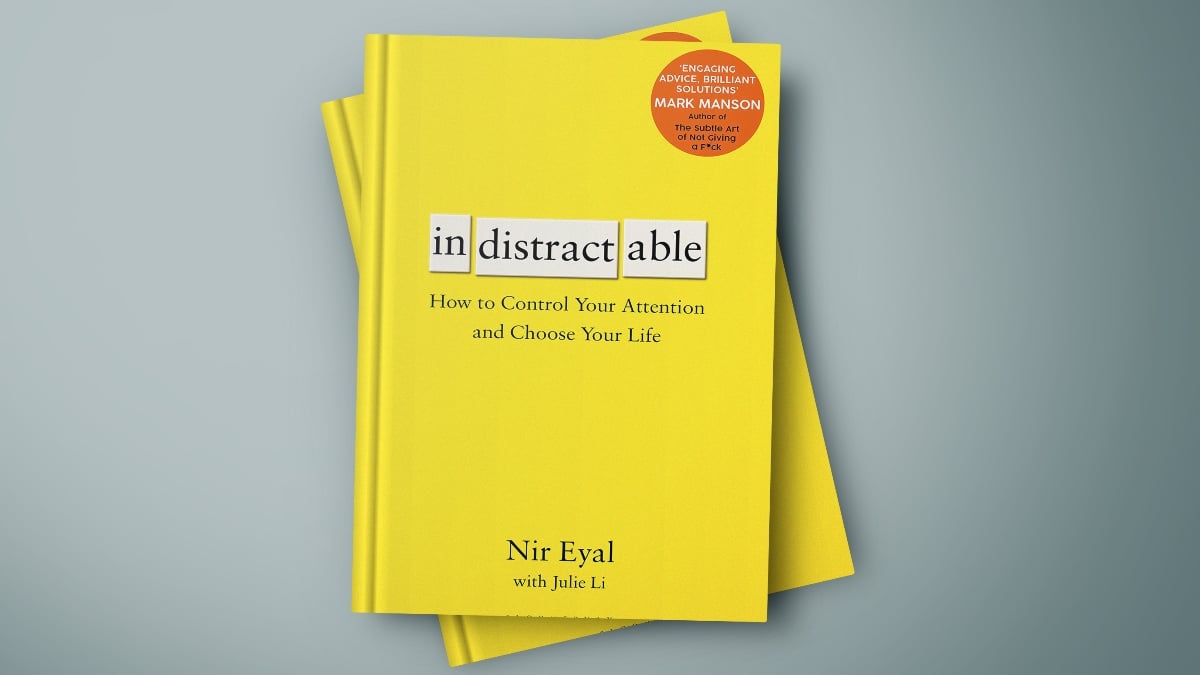At the time of writing this book review, we are nearly 2 months into a lockdown, and are working from home. Working from home does have many benefits. You can manage your time throughout the day differently, rather than being restricted by office opening hours. You can spend a bit of extra time with your partner and children, you can support your local businesses and community. With the benefits, there are also the downsides, some of them from the same sources, for example, working in the same place as your family members occupy, young children have different priorities than business managers, I can confirm. We are using technology and social media more to communicate with friends and family because we are unable to do so in person. These things keep us sane, but they do distract from the task at hand. In short, there are more distractions to deal with and it is more difficult to remain focussed. It is also a great time to study distractions and productivity as productivity and performance relies on focus.
While lockdown conditions are extraordinary and we need to cut ourselves some slack, Nir Eyal’s Indistractable, is a book that aims to fortify us against the distractions that chip at us every day. The book reveals the hidden psychology that compels us toward distractions and why the solution is not as simple as swearing off certain apps and devices. The book offers the reader with a four step, research-backed model to get the best out of technology without letting it get the best of us.
The four-step model set up by Eyal is:
- Control your triggers
- Build your schedule around your values
- Reduce external triggers
- Create precommitments
The author’s thesis is to become indistractable, we need to be able to recognise, understand and avoid distractions in favour of progress (or traction). The key to understanding how we become distracted is to think about triggers and how they can promote traction to compel us forward or distraction that pulls us back.
The triggers for each are internal, and therefore Eyal believes we can’t blame devices or technology for distracting us. The source of the distraction is within. Often it is driven by discomfort, whether it be with the quality of work we are engaged in, or marital and personal circumstances, we are prone to distraction because it offers us freedom from discomfort and discomfort triggers us to seek escape.
Control your triggers.
Controlling your triggers means to rethink our approach to discomfort and the triggers of distraction. Eyal suggests three exercises to help control your triggers. The first is to identify the trigger, investigate what discomfort led to it. In psychology, simply identifying and naming an impulse has power in controlling it. Investigating what lead to a distraction trigger names it as such, and lets you get to the root cause and understand what is going on. The second exercise is to reframe your situation, make a game of it, change your environment. This reduces the root cause of discomfort. Third is to rethink your self. Assess your willpower and what you label yourself, are you labelling yourself easily distracted or negative in terms of situational comfort? Think about flipping these labels to more positive ones such as focussed and powerful.
Build your schedule around your values.
Scheduling is important, otherwise distractions become rampant, and you find you have done a lot but none of the things you were meant to do. Eyal suggests we build our schedule around 3 responsibilities; yourself, your relationships, and your work, and consider your values in each. This will give you balance and the ability to recognise where distractions chip away at your sense of completion in each area. If it isn’t scheduled, it is a distraction. As an aside, personally I often use the Pomodoro technique when I have a lot of important work to do. It is slightly counterintuitive in that the Pomodoro technique builds distractions into your schedule. I use an App called Focus, which allows you to add your tasks, and then sets a timer giving you 25 time blocks separated by 5 min breaks.
For yourself, think about your basic needs and the qualities you want to have. Consider mental and physical health as well as self-improvement.
For relationships, you need non-negotiable commitments to your family and friends. This time should also be distraction free, Eyar doesn’t lose sight of that. Examples are device free time with kids, date nights with your partner and social time with your friends. An important takeaway from this section is to ensure you protect time for yourself and your relationships, before your work, and to use timeboxing to lock in those times.
For your work, your focus should be driven by your goals and values. What tasks will get you to your work goals in a way that aligns with your values. Scheduling work with your manager allows visibility and open conversation reduces the stress of too much to do in too little time. We have deadlines and client expectations, but you will be far more productive if your work schedule leads to comfort rather than the distraction riddled discomfort.
Reduce External Triggers
Eyal identifies 8 common external triggers we need to manage, and he offers techniques to assist. Other people, email, group chats, meetings, smartphones, desktop, articles, social media. The techniques are not about eliminating but about making sure these triggers don’t lead you down the path to distraction. Examples are visual cues to other people that you are focussing on, reducing email traffic and timebox email response time, schedule time for group chat and social media, rearrange your smartphone apps so more effort is required to access the prime distractors, and similarly with your desktop and browser tabs.
Create Precommitments
This step offers three pacts you can make to lock yourself into traction rather than preventing distractions. These pacts are to guide your behaviours to protect yourself from distraction by keeping focussed on your mission. The three pacts are: effort pacts, price pacts, and identity pacts. An effort pact is a precommitment that makes it harder to do something distracting. Deleting distracting apps from your phone or using apps that block certain websites are examples of effort pacts. A price pact attaches a financial incentive to stay focussed and stick to your commitment. This has the psychological power of avoiding loss. The example in the book is lighting a $100 note on fire every time you miss a guitar lesson. Lastly, an identity pact is having a precommitment to the identity you want to have. Making being indistractable part of your identity and the associated self talk will keep you focussed rather than distracted.
Take Aways
For me, Indistrractable by Nir Eyal is a useful reminder and framework for reducing distractions and being more productive and present for yourself and your family. Ironically, I found it hard to engage in the first part of the book, as I was a little distracted, but the book pulled me into line. The book has sound advice and presents useful tools you can action easily. It isn’t complicated and can be adapted to suit your own circumstances. As we emerge from lockdown it may be just the thing to combine with productive habits and goal setting to launch out of lockdown with a trajectory toward success.




